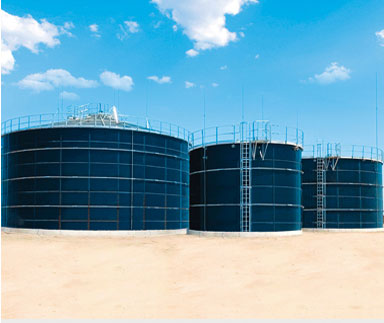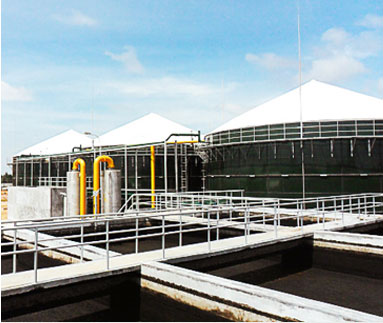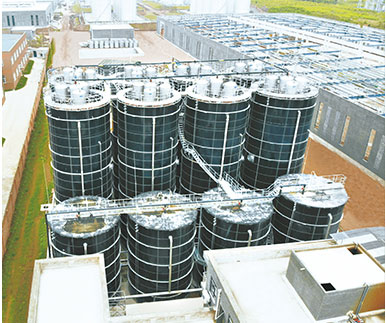
Up-flow solid anaerobic reactor (USR) is a kind of reactor with a simple structure and suitable for high suspension solid organic material. The raw materials enter the digester from the bottom and contact the activated sludge in the digester, so that the raw materials can be quickly digested. Undigested solid particles of organic matter and biogas fermentation microorganisms are retained in the digester by natural sedimentation, and the supernatant overflows from the upper part of the digester, so that a solid retention period (SRT) and microbial retention period much higher than the hydraulic retention period can be obtained ( MRT), thereby improving the decomposition rate of solid organic matter and the efficiency of the digester. There are many applications in the current resource utilization of manure in the livestock and poultry breeding industry. Many large and medium-sized biogas projects use this process.
The biogas slurry produced after USR treatment belongs to high-concentration organic wastewater. The wastewater has the characteristics of high concentration of organic matter, good biodegradability, and easy degradation, and cannot meet the discharge standards. Therefore, except for fertilizers used for flowers and vegetables, the remaining biogas slurry must be returned to the collecting tank and be reused after aerobic treatment. Or discharge. In view of the high ammonia nitrogen content of the biogas slurry, the volatile ammonia nitrogen dissolved in water can be partially removed by pretreatment. The organic matter in the biogas slurry is treated by biological methods. That is, the metabolism of microorganisms in the water is used to degrade organic pollutants to achieve the purpose of purifying water quality and eliminating pollution.
Simple structure
No sludge reflux is required
No stirring device is required
To deal with high suspended solids
No three-phase separator is required

Aquaculture Wastewater

Palm oil wastewater

Brewery wastewater